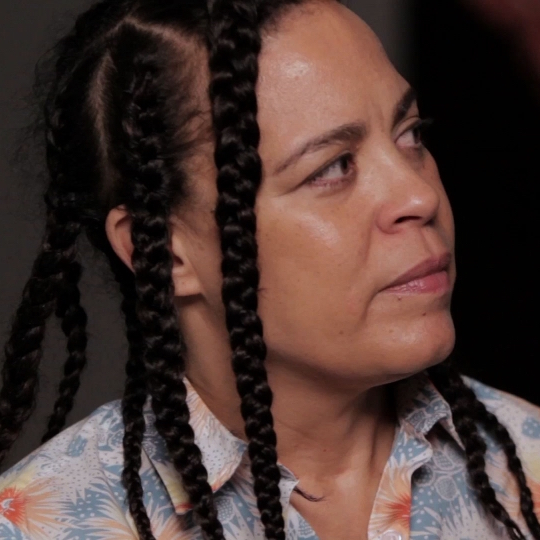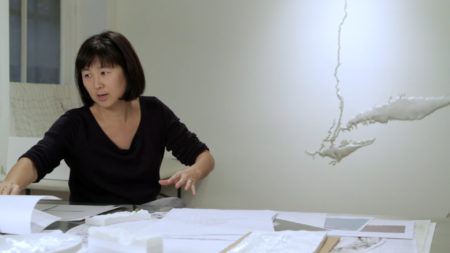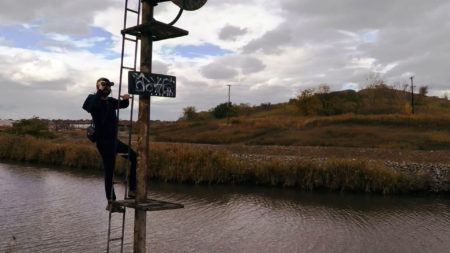Continue playing
(Time remaining: )
Play from beginning
Continue playing "{{ controller.videos[controller.getVideo(controller.currentVideo)].segmentParentTitle}}"
{{controller.videos[controller.getVideo(controller.currentVideo)].title}} has ended.
"Osedax"Ellen Gallagher
Filmed in 2013, artist Ellen Gallagher discusses her large-scale installation Osedax (2010) at the New Museum in New York City. Made in collaboration with Dutch artist Edgar Cleijne, Osedax was inspired by and named after the bone-devouring worms recently discovered in an ocean canyon near Monterey, California.
Drawn to scientists’ description of this discovery, Gallagher sees similarity between their account and how science fiction narratives unfold through the transformation and evolution of characters and physical matter.
Credits
Producer: Ian Forster. Consulting Producer: Wesley Miller & Nick Ravich. Interview: Ian Forster. Camera: Rafael Salazar & Ava Wiland. Sound: Ava Wiland. Editor: Brad Kimbrough. Artwork Courtesy: Edgar Cleijne & Ellen Gallagher. Special Thanks: New Museum. Theme Music: Peter Foley.
Closed captionsAvailable in English, German, Romanian, Italian, Japanese, Korean, Chinese, Italian
Through the Art21 Translation Project, multilingual audiences from around the globe can contribute translations, making Art21 films more accessible worldwide. Translate this video now.
Interested in showing this film in an exhibition or public screening? To license this video please visit Licensing & Reproduction.
Repetition and revision are central to Ellen Gallagher’s treatment of advertisements that she appropriates from popular magazines like Ebony and Our World. Initially drawn to wig advertisements because of their grid-like structure, she later realized that it was the accompanying language that attracted her. Gallagher began to bring these “narratives” into her paintings—making them function through the characters of the advertisements, as a kind of chart of lost worlds. Although the work has often been interpreted strictly as an examination of race, Gallagher also suggests a more formal reading with respect to materials, processes, and insistences. From afar, the work appears abstract and minimal; upon closer inspection, googly eyes, reconfigured wigs, tongues, and lips of minstrel caricatures multiply in detail.
“This idea of evolution and evolutionary possibilities quite often repeats in science fiction.”
Ellen Gallagher
On the Environment
Maya Lin
Mark Dion
Ellen Gallagher
Ellen Gallagher
Ellen Gallagher




